A Fall from Grace's
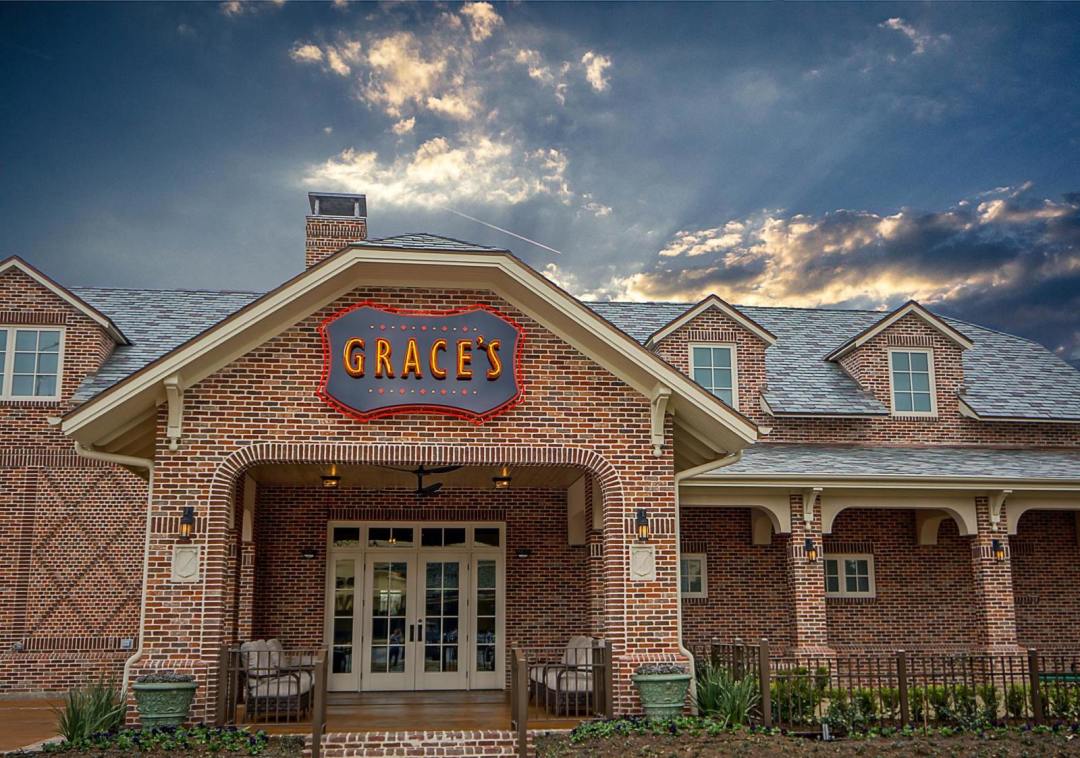
Grace's is gorgeous, offers ample parking, and has excellent service—but this is where its charms end. | Photos courtesy of Grace's
It's not the taste of overly sweet chile gravy on the tough cheese enchiladas from Grace's that has stayed with me for days, nor the gut punch of paying $100 for a dinner for two that neither of us could finish last Friday night. No, these aren't necessarily the things about Grace's that have stuck in my mind; it's larger than that. It's the pervasive sense of general disappointment and confusion that such a restaurant could even exist in Houston at this moment—especially a stone's throw away in Upper Kirby from some of the finest establishments our city has to offer.
Grace's
3111 Kirby Dr.
713-728-6410
gracesonkirby.com
Go to Pondicheri or The Queen Vic and you'll find fascinating Gulf Coast spins on Indian dishes. Go to Haven and you'll find updated Texas cuisine, or tuck into one of the globally-influenced crudos at its raw bar, Cove, for an even more strikingly modern meal. Go to Nara for chef Donald Chang's personalized Korean and Japanese fusion food. Go to Kata Robata for chef Manubu Horiuchi's masterful Japanese cooking with daring French influences. Go to Pico's Mex-Mex for regional Mexican classics, or to Local Foods for fast-casual soups and sandwiches made with local products that reflect Houston in each bite.
Or go to Grace's, which opened earlier this year as the latest addition in the massive Carrabba family compound on Kirby. Go to Grace's and see a time capsule of Houston from a time when The Confederate House still fed well-heeled River Oaks types under a mural of an antebellum plantation vignette, when Bill Williams offered "savage chicken" on its menu complete with a crude cartoon of a Native American cooking chicken and Houlihan's insanely scatterbrained menu offered a little something for everybody from its Saks Fifth Avenue location.
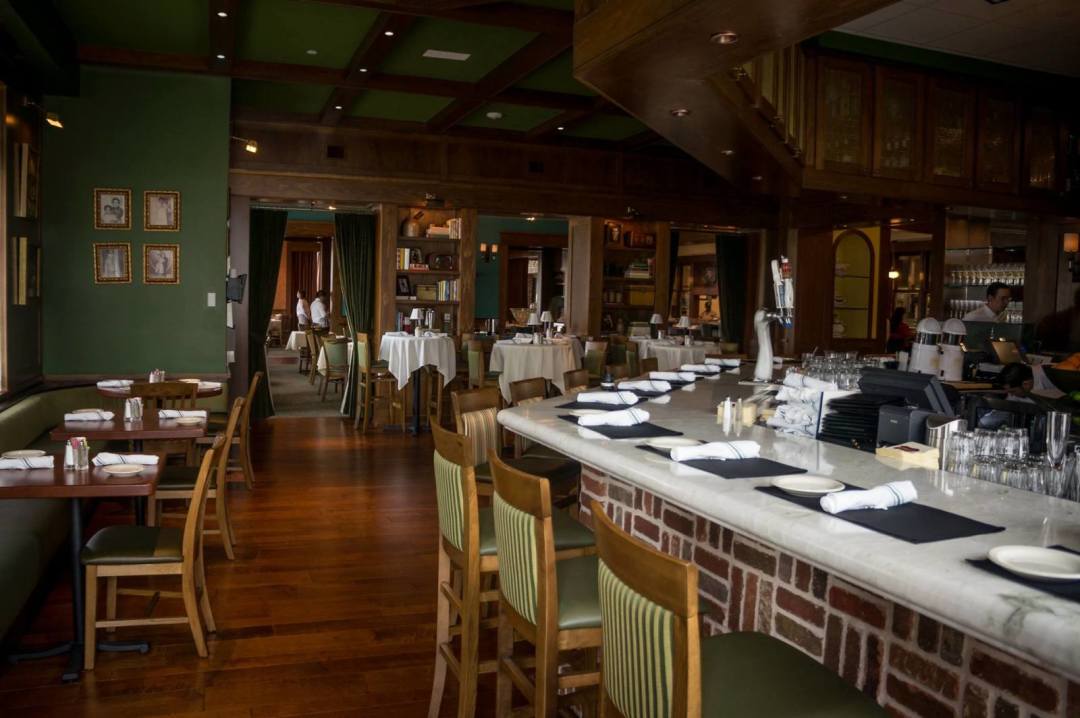
The dining rooms at Grace's are as intentionally old-school as its menu, though with far greater results.
Indeed, the menu at Grace's looks eerily like a Houlihan's reboot, complete with a dizzying assortment of completely incongruous dishes (a Gulf fried oyster salad with Maytag blue cheese; a Mediterranean tuna melt on ciabatta; a seafood cocktail with kimchi coleslaw; lobster tagliatelle in a poblano cream sauce; a Wagyu strip steak; a random side dish of "Mexican corn") and even an inexcusably racist font choice for its two Asian-inspired items: Johnny Chang's Kung Fu Chicken and Happy Family. (What? No Hawaiian font for the "Hawaiian pork chop with Polynesian rice" or tiny sombrero sitting next to the carne asada and cheese enchiladas?)
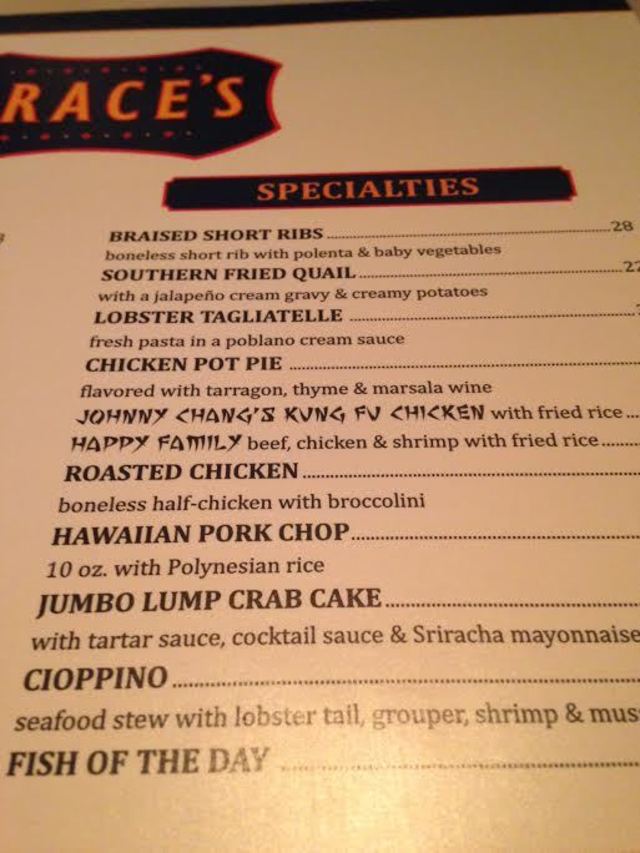
No. Just...no.
Image: Katharine Shilcutt
Grace's is a throwback to a time when, as longtime food critic Alison Cook once put it in her 1994 Houston Press review of The Confederate House, Houston "was still a Southern city—pre-boom, pre-internationalist, a manageable place where things could be arranged by a few oligarchs meeting over cards in a suite at the Rice Hotel." A time when "ethnic" dishes showed up on menus at places like Trader Vic's as kitschy tokens, or as a means of consuming "the other" while feeling at once culturally superior yet also self-congratulatory for possessing such broad, tolerant horizons. You ordered a foreign dish in a staunchly American restaurant; aren't you terribly modern!
But my issues with Grace's extend far beyond the sociological issues and implications of deliberately strolling back in time to a point at which Houston's cultural attitude (and its cuisine) were less than ground-breaking. Quite simply, it's not very good.
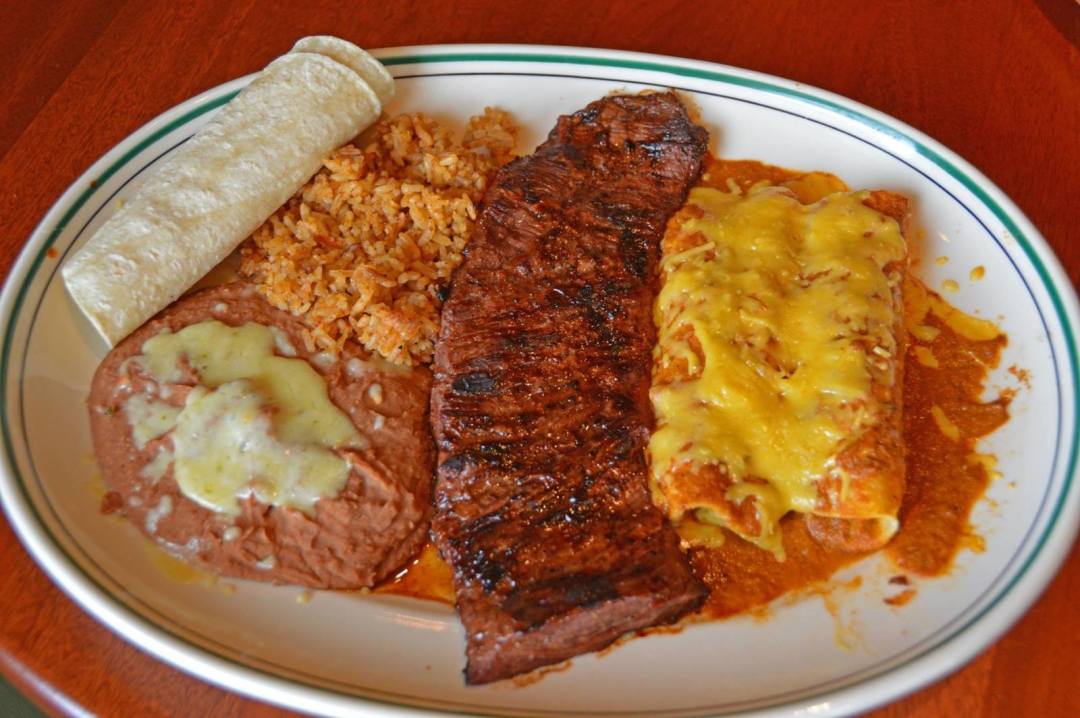
Carne asada and cheese enchiladas: $22
The carne asada that accompanied my sickly sweet cheese enchiladas was tough and completely unseasoned. I don't know if it missed a trip through the marinade, or this was intentional, but not so much as a lick of salt had touched the sad strip of beef. Ditto the macaroni and cheese my dining companion ordered as a side; had we ordered from the low-sodium menu by mistake?
His "yellowfin tuna stack" had more potential, though it, too, was a curious choice. As one of the more intentionally modern dishes on the menu (along with a yellowtail carpaccio on the appetizer side that featured figs, pomegranate seeds, and micro arugula), it stuck out like a sore thumb against lamb chops in mint sauce and smoked ribeye sandwiches with American cheese and horseradish.
When the plate of yellowfin tuna arrived, we were both sad to see that the plate itself was cold yet sweaty—a telltale sign that it had been assembled some time ago, put in the walk-in, and then removed just prior to serving to shake the chill off. The tuna stack itself had shaken off none of the chill, however, and was still ice cold in the middle. Tossing chunks of tuna, avocado, tomato, jicama, edamame, and pea shoots into a metal ring on the center of a plate with no garnish whatsoever is not the sort of operation that requires pre-assembly. Plenty of prep time, sure. But with a kitchen (and kitchen staff) as massive as the one at Grace's, there's no reason this dish shouldn't have been assembled to order. As it was, the ice cold dish offered up very little flavor and nearly swam in the condensation that pooled on the plate.
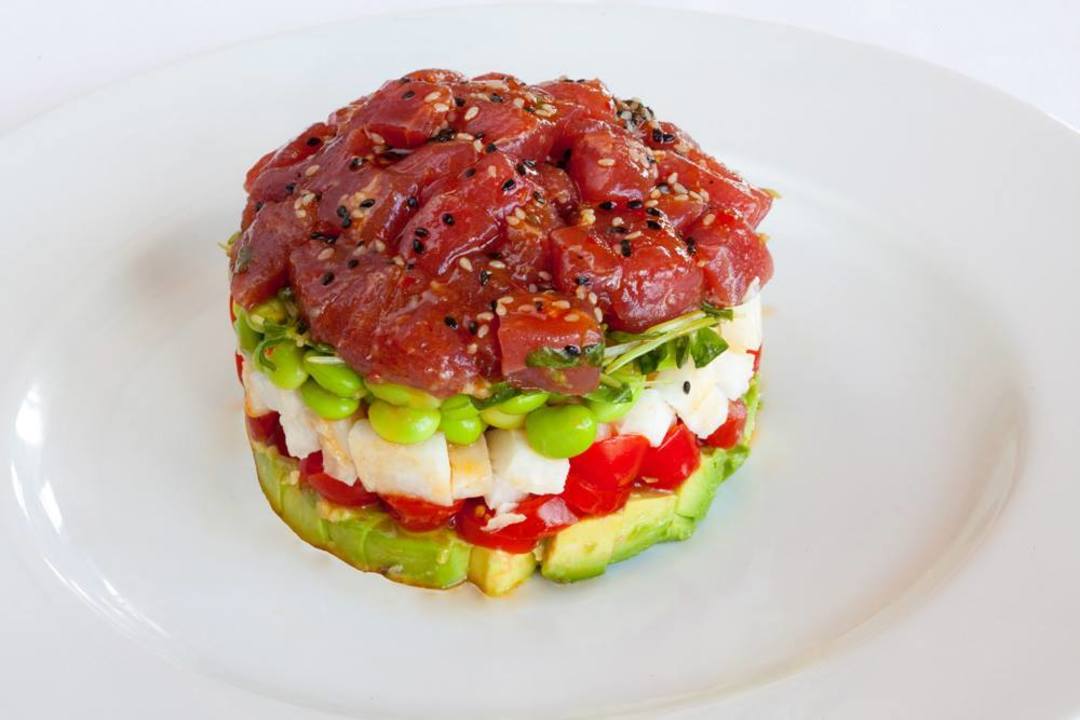
Yellowfin tuna stack: $18
Granted, the appetizer we shared was good—a "baked potato dip" that was actually a cheese dip with bacon and chives on top. Though the dip itself was grainy, the homemade potato chips were quite lovely, nicely browned and well-seasoned. And the dessert, too, was good, although the "Godiva Freeze" blend of Kahlua, vodka, and chocolate ice cream was basically the "Milkshake No Minors" at Reef without a chocolate straw.
And at its core, this is what's wrong with Grace's: you could be eating far better iterations of its dishes at far better restaurants—in some cases for far less money. I get the impression that owner Johnny Carrabba went around scouting menus at popular restaurants he liked, then threw a tangle of those menus' dishes together in one inadvisable mash-up. Yes, Houston is "Mutt City." Yes, we like to blend and bend cultural influnces to create crazy new cuisines. But these mash-ups work because they're molded by people who have a deep understanding of and respect for the ingredients and cultures involved.
In an interview with the Chronicle's Syd Kearney a few months ago, Carrabba said of Grace's meandering menu: "I was looking at food that would match my mood, whatever it is." Whatever indeed. Kearney nodded to Carrabba's own heritage—which is itself a Mutt City mash-up of Texan, Italian, and Cajun—though Carrabba doesn't necessarily seem to view himself through that lens. You get the impression that he sees himself as simply Houstonian, not the subtle blend of backgrounds that is so very Houston itself.
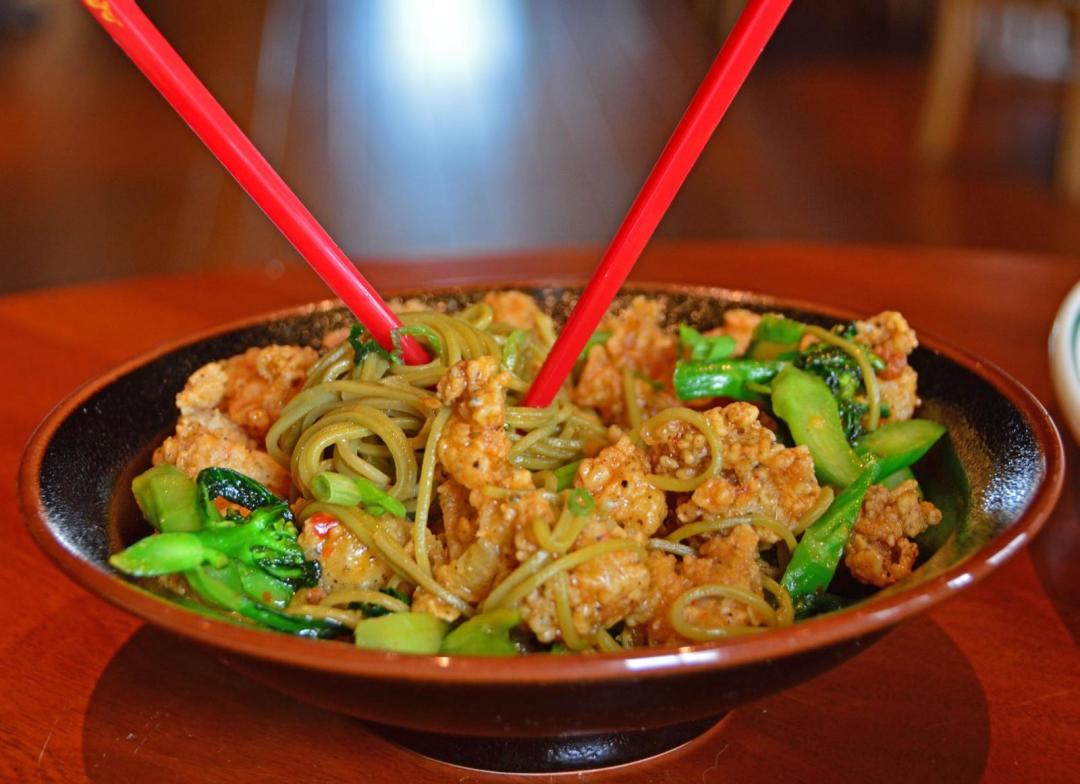
In Japanese culture, chopsticks are stuck into a bowl of food that is being offered to the dead or dying.
This attitude manifests itself in Grace's confused and confusing menu. You don't get the sense that dishes like Southern fried quail and crabcakes with Sriracha mayonnaise were chosen because of any particular affinity Carrabba has for them, but rather because they appear elsewhere in town. Carrabba told Kearney he was inspired by menus such as Danny Meyer's at Union Square Cafe in New York City and The Ivy in Los Angeles, but there is a cohesiveness to those menus that makes sense. Those menus speak to their native settings despite sharing common ingredients and techniques. The dishes flow. There is a distinct narrative in place.
The narrative at Grace's is one of unironic kitsch, a longing for the good old days that were only good for a select few. The menu speaks volumes about Houston, but about a Houston we are far removed from not only in time but in attitude. We are not a Houston whose provincial understanding of the world at large is manifested in clumsy, token ways; we are a Houston of effortless inclusiveness. We are a city of weavers. We are a city of builders and big ideas, not sad, sweaty plates of tuna or bland, underseasoned steaks.
We are also a city that knows where to get a good tampiqueña plate for less than $22, and a city that knows better than to employ "Chinese Takeout" font for the two Asian dishes on a menu. But hey—at least Grace's has ample parking and excellent service, which goes pretty far these days. I look forward to a time when Carrabba scraps this pitiable menu and installs something more thoughtful in its place, because the Carrabba family itself is Houston—the family's story is Houston's story—and it can be told better than this.




